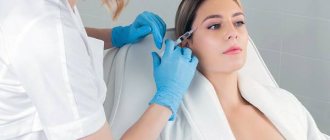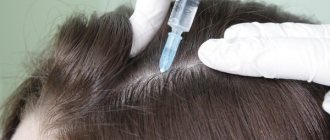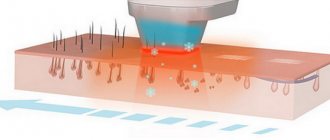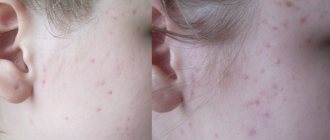Women all over the world are actively fighting excess body hair, using a variety of methods to remove it. In the desire to get smooth and even skin, you have to try many procedures on yourself, many of which are extremely painful and unpleasant, before you find exactly the method that suits you in all respects. To get rid of hair forever, special procedures are used, which are carried out only by qualified specialists. One of the varieties, photoepilation, is comfortable and gives excellent results on hair of any color and any location.
- How does photoepilation work?
- Contraindications to the procedure
- Side effects and health hazards
- Photos of possible consequences after the procedure
- Conclusion: Weighing the Pros and Cons
- Reviews
The essence of the method
Photoepilation is not ordinary hair removal, which affects excess hair with dozens of small tweezers that instantly grab and very painfully pull out the hair. Photoepilation acts gradually and gently, without injuring the skin or compromising the integrity of the epidermis.
The essence of the method is that the hair shaft is briefly exposed to a high-power light flux. Light energy turns into heat, the hair heats up to a temperature of plus 80 degrees Celsius, and the follicle dies. After some time it falls out, new hair in this place will not grow for a long time. Therefore, photoepilation is a procedure that will rid you of unwanted hair not for a week or a month, but for a couple of years. The main thing is to complete the full course, and not limit yourself to one procedure, despite its high cost. The price of photoepilation depends on the number of flashes; accordingly, the most expensive thing to do is the legs and arms, the cheapest is the bikini area, armpits and face.
Types of photoepilation:
- IPL. The name is similar to laser hair removal, but the length of the rays is different (600-900 nanometers), therefore, it is photoepilation. The most effective, but traumatic type, since the flash lamp affects the hair follicles with high-intensity flashes. IPL hair removal is used to remove all types of hair, except red, blond and gray hair.
- Elos. Removes even the most fragile, light hair, which almost does not absorb light energy. This type is the safest, the skin is protected from overheating, so the risk of burns and irritation is minimal.
- LHE hair removal. This type is the most painful; no cooling gels are used in the process, but only LHE rays can deal with coarse and gray hairs. The procedure covers the largest area of the treated surface at a time - up to 11 square meters. cm.
Only a master will be able to tell which type of photoepilation is most appropriate in your case.
Improved types of light hair removal
Depending on the device used, experts distinguish the following types of photoepilation:
1. Lhe. The intensity of the flashes here is relatively low, so the method does not require the use of cooling gel. The disadvantage of the technology is the relatively lengthy procedure.
2. Elos. The wavelength here is adjusted individually, this makes it possible to adjust the equipment without minimal risk of overheating the skin. A significant disadvantage of this type of hair removal is its absolute ineffectiveness for removing light hair.
3. Aft. It combines the effects of both light and laser energy, and the presence of a special filter limits the possibility of overheating. The technology is effective for removing light hairs and is completely safe even for dark skin.
When to choose photoepilation
Who, first of all, should pay attention to this type of unwanted hair removal, such as photoepilation? These are people suffering from hirsutism. If there is too much unwanted hair on the body, especially on a woman, it is often coarse, very dark and grows quickly. Everyday, non-salon forms of hair removal, for example, shaving or regular hair removal, help in this case for a short time. Frequent shaving or removing unwanted hair with an epilator can cause irritation and provoke the problem of ingrown hairs. And not everyone has enough time to simply focus on the problem of smooth skin every other day. Salon treatments come to the rescue. Photoepilation allows you to forget about the problem of excess hair for a long time.
Restrictions during pregnancy and lactation
During pregnancy, expectant mothers should refrain from undergoing photodepilation to ensure the safety of the health and life of the child. During light exposure, pain may occur, especially with very sensitive skin, and due to a stressful situation, false contractions may begin or spontaneous pathological termination of pregnancy may occur. In addition to the main problem, unfavorable factors may arise such as:
- During pregnancy, there is a high probability of pigment spots appearing under the influence of light radiation.
- An unexpected allergic reaction to light flashes, resulting from hormonal changes in the female body.
- Increased dryness of the skin. During pregnancy, mothers' skin is dry, and hair removal using photo flashes additionally removes moisture, which leads to unsightly stretch marks.
- There is a danger of developing varicose veins of the labia.
Contraindications
Who will benefit from photoepilation:
- people with infectious diseases in the acute stage;
- herpes virus, including Epstein-Bar virus and cytomegalovirus;
- varicose veins;
- wounds and scars on the area of skin that will be treated:
- any serious chronic diseases in the acute stage;
- with photosensitivity.
If you decide to have photoepilation, first consult a dermatologist. Do you suffer from hirsutism? Find out whether the cause of this phenomenon is a serious hormonal imbalance, otherwise you will simply waste your money - new hairs will begin to appear earlier than six months after the course of procedures.
Operating principle
Before using a photoepilator at home, it is important to understand the essence of its work and the features of removing hair from the body.
Photoepilators use high-impulse beams of light emitted onto the treated area. This light is absorbed by melanin, a pigment that ensures hair growth and restoration. A large influx of heat to the pigment leads to its spontaneous destruction, which ensures the death of the hairs.
There is quite a bit of melanin in light hairs, so photoepilation at home has a great effect only if it is carried out on dark hair.
Photoepilation procedure
The procedure goes as follows:
- After a detailed consultation, determining the type of photoepilation and calculating the cost, you are laid on a couch and the corresponding part of the body is exposed, which will be deprived of unwanted hair. If a “deep bikini” is made, then the couch is replaced by a chair similar to a gynecological one.
- The procedure is delicate; if the hairs are too long, they will begin to melt. Therefore, before going for photoepilation, it is advisable to shave, or the master himself can shave you before the procedure.
- A cooling gel is applied to the skin, the device is turned on, and the specialist uses flashes to remove hairs.
- The duration of the procedure depends on the area being treated: a “deep bikini” takes half an hour, legs – about two.
- After the procedure, the cooling gel is wiped off, and anti-burn cream or gel is applied to the skin.
- After some time, in the place where the follicles were destroyed with the help of photo rays, a small growth of unwanted hairs will still begin. The master advises in this case to shave, this contributes to the active destructuring of the hairs.
- The course consists of several procedures with a break of two to three weeks.
The video describes all the details of photoepilation performed in a beauty salon and analyzes the pros and cons of the procedure.
Models for home use
Let's start our review of popular models with the Braun Silk Expert BD 5001. The Braun photoepilator boasts a good resource of 120 thousand flashes (this is up to 6 years of operation), the presence of a skin tone sensor for power correction and a sliding system that will allow you to make fewer flashes and don’t miss a single section. What do consumers say about the products of this brand? The Brown photoepilator has received positive reviews. According to consumers, it really helps get rid of most unwanted hair.
Another representative of the famous cosmetic brand is the universal Remington Pro Face & Body for face and body with a skin sensor and 65 thousand flashes. It is quite popular, like other products of the company.
The Philips Lumea photoepilator has also received some good reviews. It is actively advertised and is quite popular due to this. The brand offers several models - from the simplest to the most modern. The most expensive - Prestige SC2007 - is suitable for treating the face and body, runs on a battery, weighs only 700 grams and allows up to 250 thousand flashes. Reviews about it are contradictory - from enthusiastic to neutral or even negative, because, according to some dissatisfied consumers, they were unable to get completely smooth skin. The disadvantages include the duration of the procedure, which often does not have enough battery charge, and the impossibility of replacing the lamp after the specified number of flashes has been consumed.
The Homedics Duo photoepilator is a product of an American brand, the advantages of which include a low price, a lamp with 50 thousand flashes and power settings. Since the device costs around 10 thousand rubles, it will pay for itself in just 2 sessions in the salon.
A good result can be obtained if you use the Israeli Silk Glide photoepilator. Despite the small (compared to analogues) lamp life of 30 thousand flashes, it is capable of removing hair, albeit not forever, but for a long period. In addition, it is compact and lightweight.
The BaByliss G932E Homelight 50 photoepilator has a resource of only 50 thousand flashes, but boasts five power modes. However, even the strongest mode does not work well on red and blond hair and does not provide 90% hair removal, as advertised.
Photoepilation devices
Photoepilation devices began to appear more than 10 years ago. They produce powerful pulsed light in the range of 500-1200 nm, including unsafe ultraviolet light, but in order to avoid negative effects, special filters are built into the devices. The highest quality and popular salon brands include Skin Station Mistral (a multifunctional device used for photoepilation, skin rejuvenation and treatment of various dermatological diseases), Ellipse Light, Record 618, Classic 512, Quantum HR/SR, Apollo V+ with a built-in computer.
Home photoepilators include devices from the brands Philips Lumea, E-Flash, E-one Clinic R, HPLight, E-ONE Evolution. Home photoepilation has its pros and cons:
- you don’t need to pay large sums in beauty salons or waste time visiting a specialist;
- portable photoepilators are characterized by low power and the ability to maneuver, so the effect of non-salon equipment leaves much to be desired;
- In the wrong hands, the device can cause burns.
Minuses
True, photoepilation has a lot of disadvantages, for example, it is helpless for dark and tanned skin or for very light and thin hairs. Disadvantages include the need for several expensive procedures, as well as their periodic repetition.
But the main reason to doubt is, of course, the high price. Indeed, one procedure, for example, on the legs, can cost 10-12 thousand rubles. You will have to pay no less than 20 thousand rubles for the device itself - this is how much home photoepilation will cost you.











